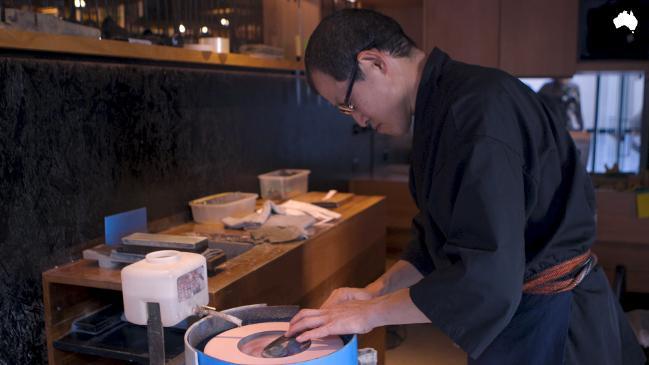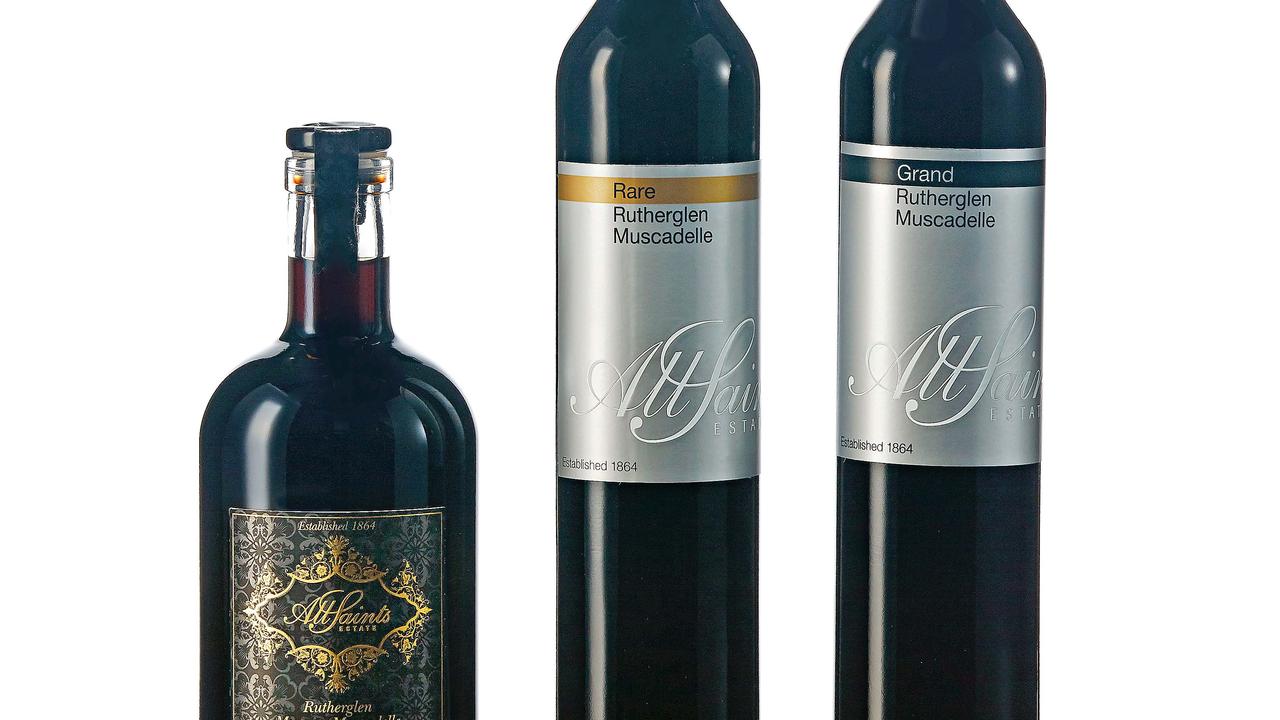That’s a knife: caring for kitchen knives at Tanto, Melbourne
I’m not sure what mine is worth, except that it’s priceless.
It’s a kind of resurrection. My old carbon steel Sabatier has been given new life. The edge has been honed to perfection, a long process of stepping down from coarse to ever finer grit by a much-practised master who uses both an electric rotary whetstone and static stone blocks, with water. Old school, like the knife. The entire blade and shank has been polished. All that’s left is for me to take a little Brasso to the rivets.
I’m not a chef. And I’m not a knife wonk. But there is something primal, powerful and in this case quite emotional about using good kitchen knives. “The Japanese approach,” says Akira Shinkai, “is that a knife is for a lifetime. That’s why the care and maintenance of it is so important. To the Japanese chef, the knife is an extension of his arm … It was the same for the warrior and his sword.”
Given that Shinkai sells a few knives that cost in excess of $1000, mirror-finished tools of extraordinary beauty and precision, his pitch resonates. I’m not sure what mine is worth, except that it’s priceless.

“How old is your knife?” asks Shinkai while his colleague Takeshi Kojima works diligently on the Sabatier in the sharpening room of Tanto, a little slice of Japan in deepest downtown Melbourne. Like many things relating to my late mother, who gave me the knife about 30 years ago straight from her kitchen drawer, I don’t know. It’s safe to say it’s at least 60 years old, but probably more. And now it has a Japanese thread to its narrative. I’m not a spiritual person, heaven knows, but to the extent that a loved, treasured object can have a life and a story, my knife has taken something meaningful from the care and attention of a Japanese craftsman.
Kojima is the doer — a chef by trade who has been sharpening knives for about 40 years. Shinkai is the talker. He manages Tanto, which is surely the only knife shop and professional sharpening facility run by a hotel (QT) in Australia. Maybe the world. Stepping into their little domain, where Japanese is the lingua franca and beautiful examples of the Japanese craft of knifemaking are on display, is to escape from raw, big-city nerves and immerse yourself in a gentle, warm onsen of beautiful manners, respect and powerful tradition.
“My role here is like an ambassador,” Shinkai says. “People come in to talk about knives, and chefs from all around town come in to have their knives sharpened, but lots of people just come in to talk about Japan. Sometimes they are going to Japan. Sometimes they come in with a knife they bought in Japan and want to know more. But I like this role as an ambassador.”
He certainly displays the patience of a diplomat as he explains, for no doubt the thousandth time, the three basic, traditional chef knives of Japan: the deba, for filleting and breaking down a fish; the yanagiba, for slicing the flesh; and the usuba, for vegetable peeling and slicing.
There’d be something wrong if you didn’t feel the urge to flip out a credit card on the spot and take one of each. Like most who have visited Tsukiji market in Tokyo, I came home with a modest deba from one of the knife vendors some years back. I love it, but don’t use it much; that’s not the point. It has a story and meaning. It will belong to my son one day.


